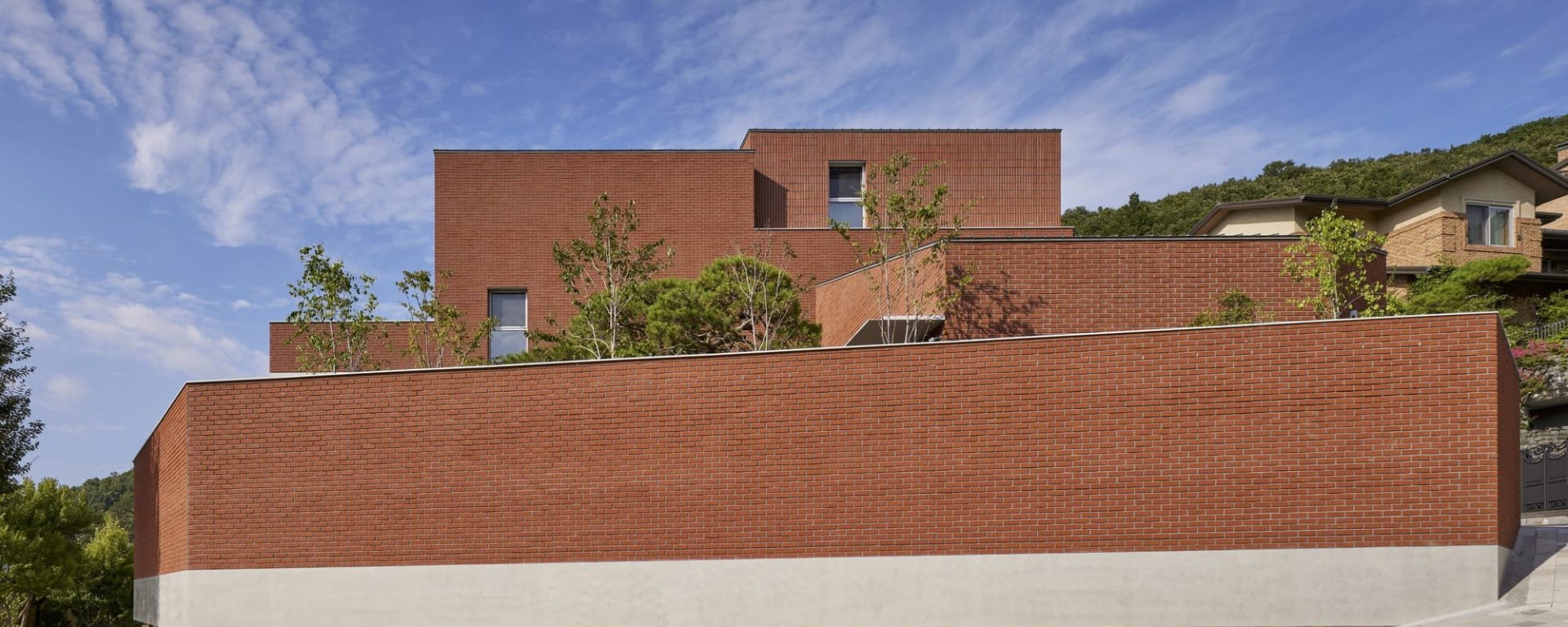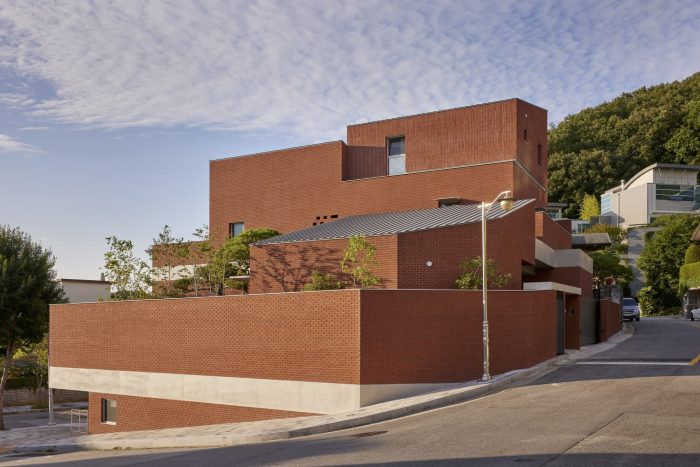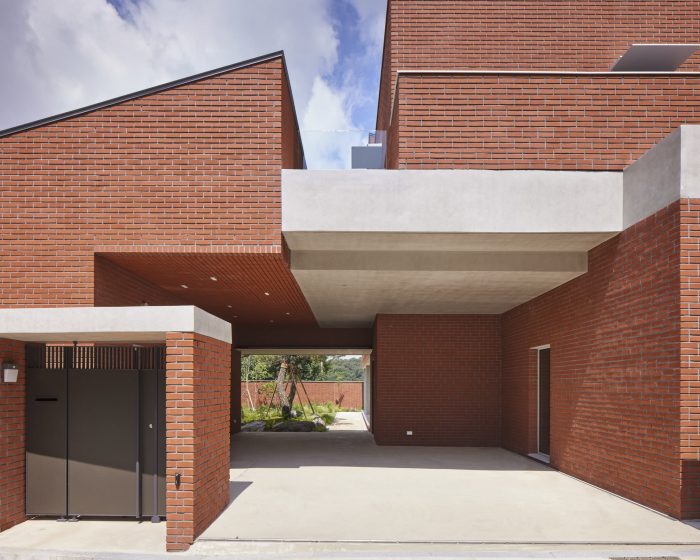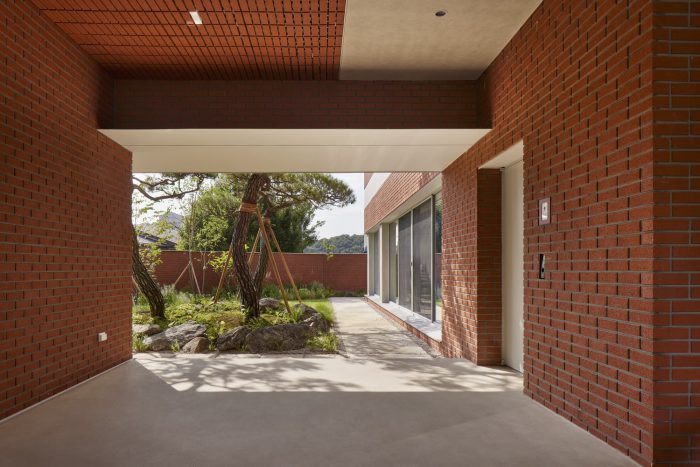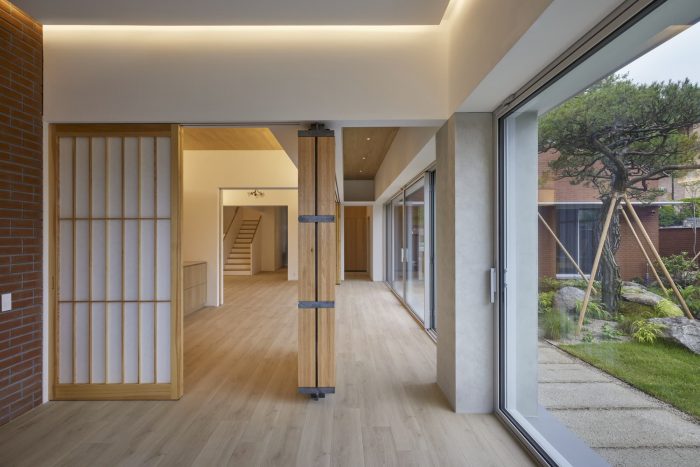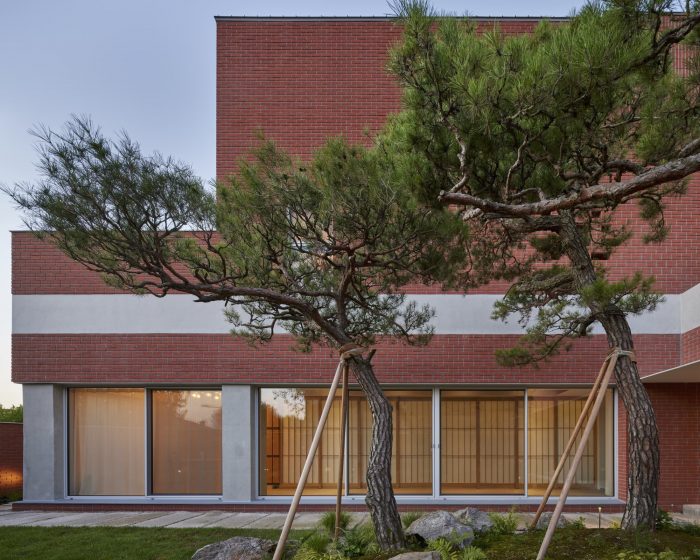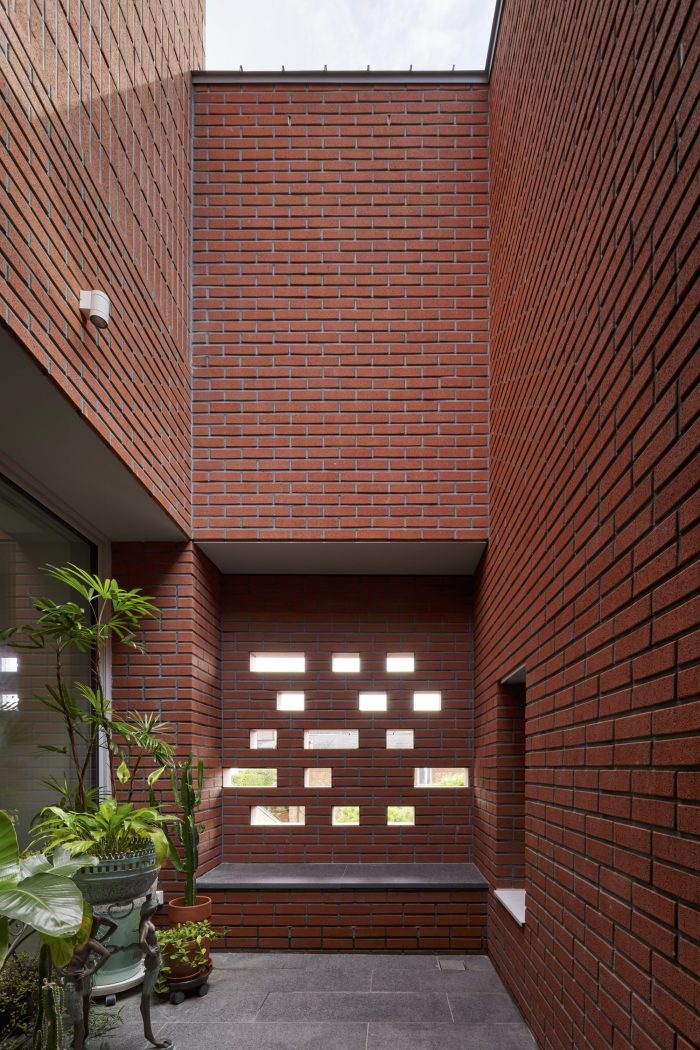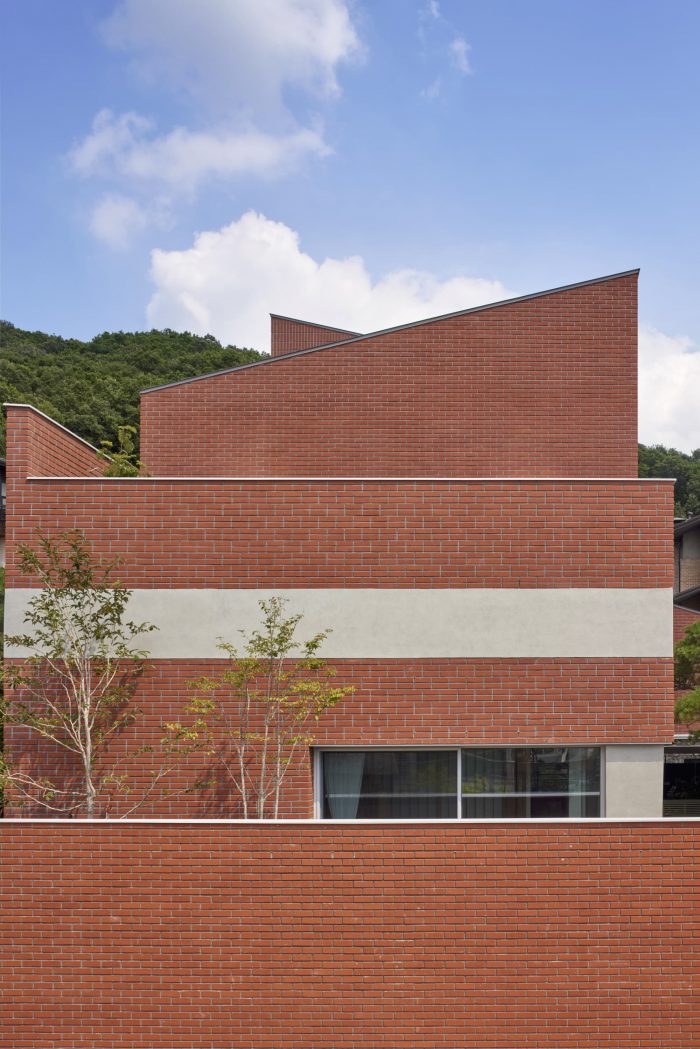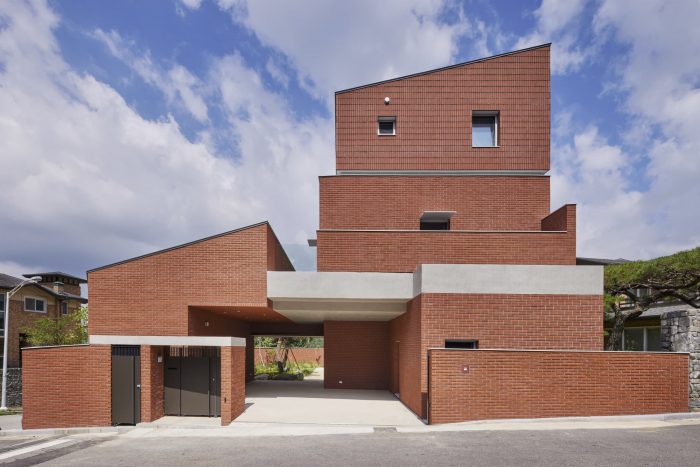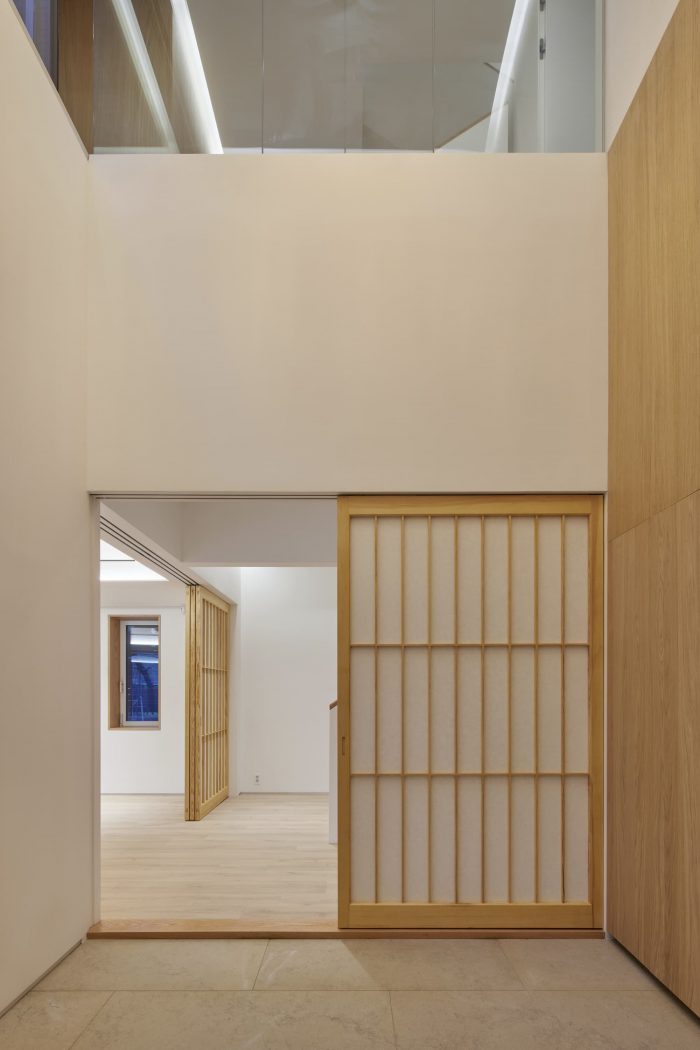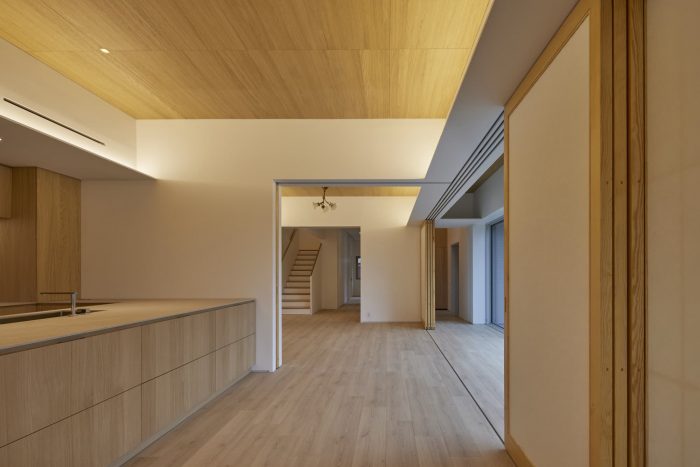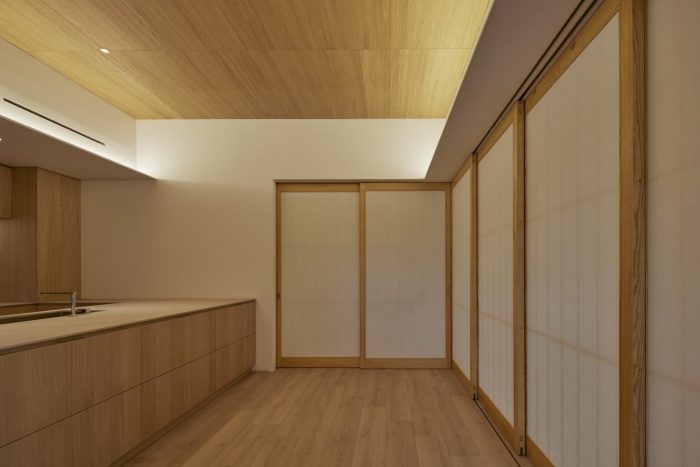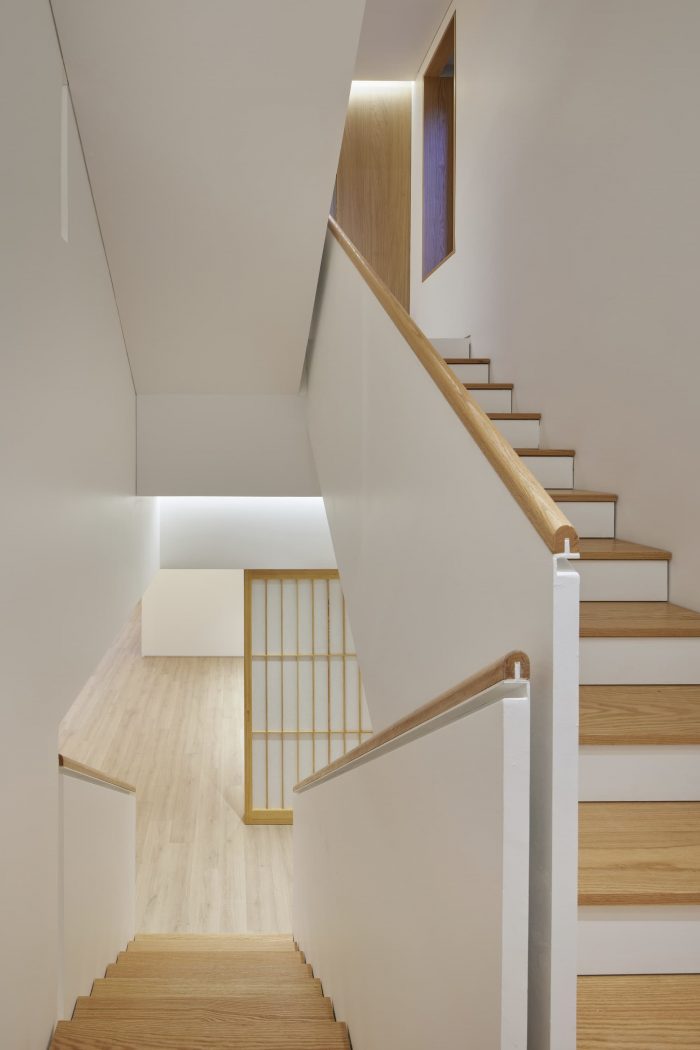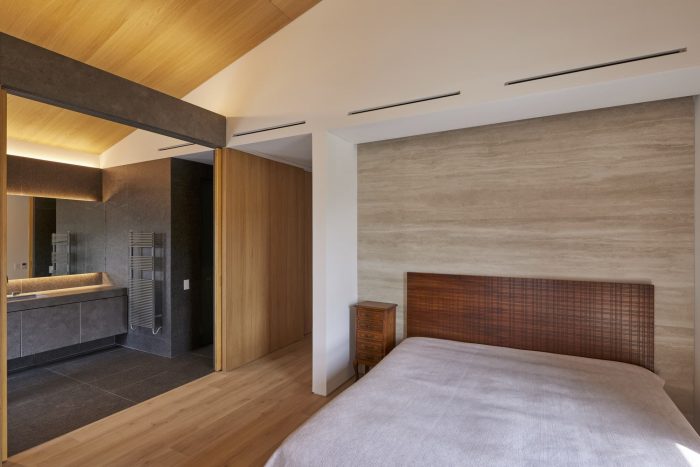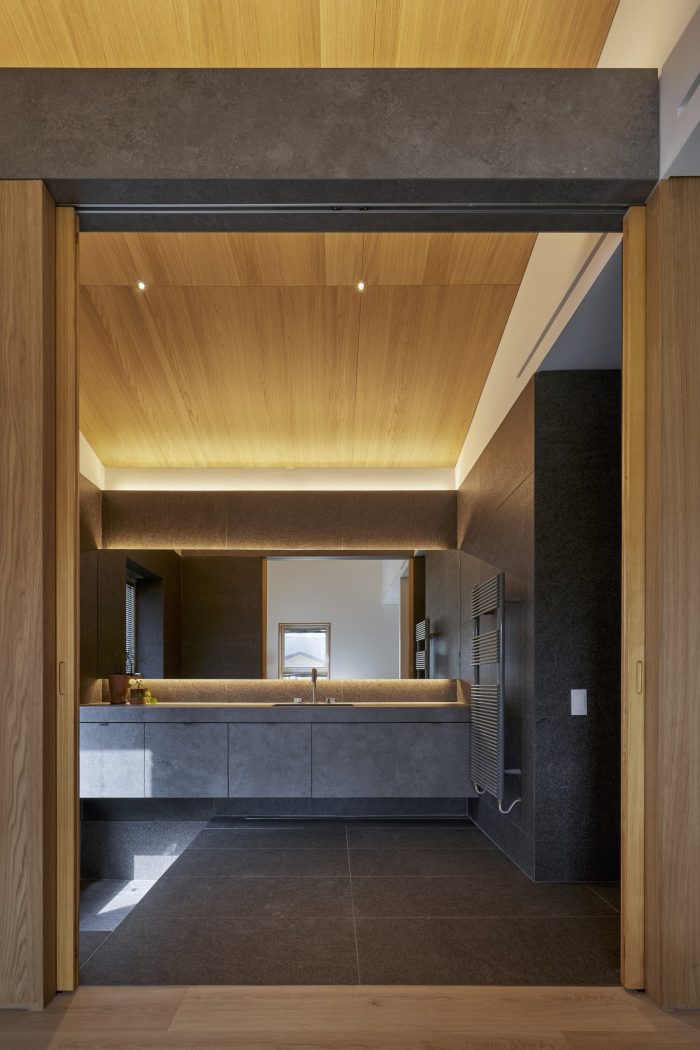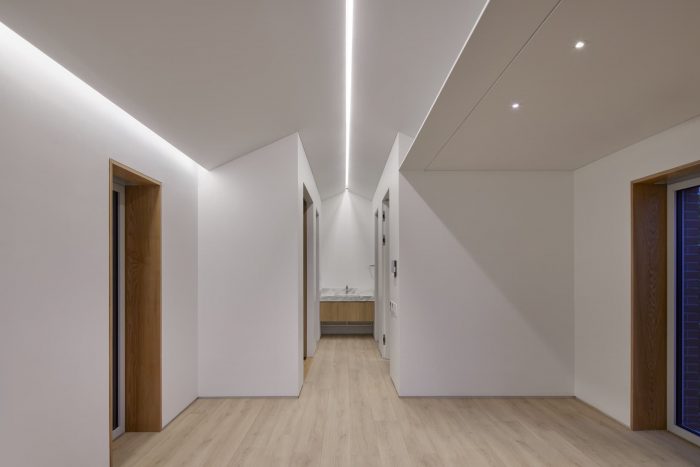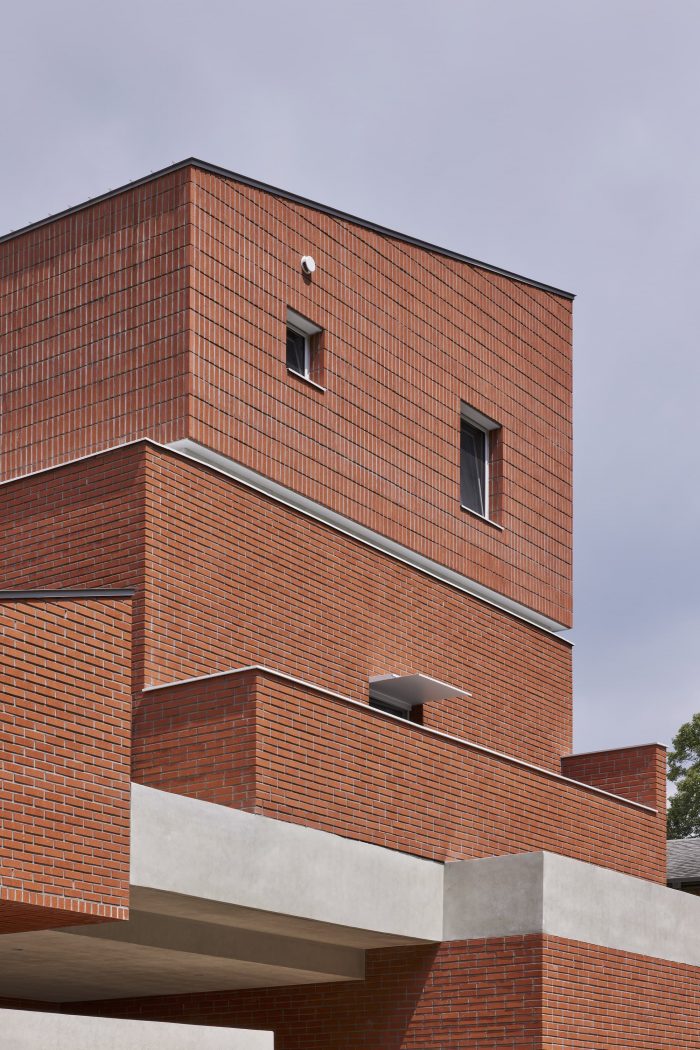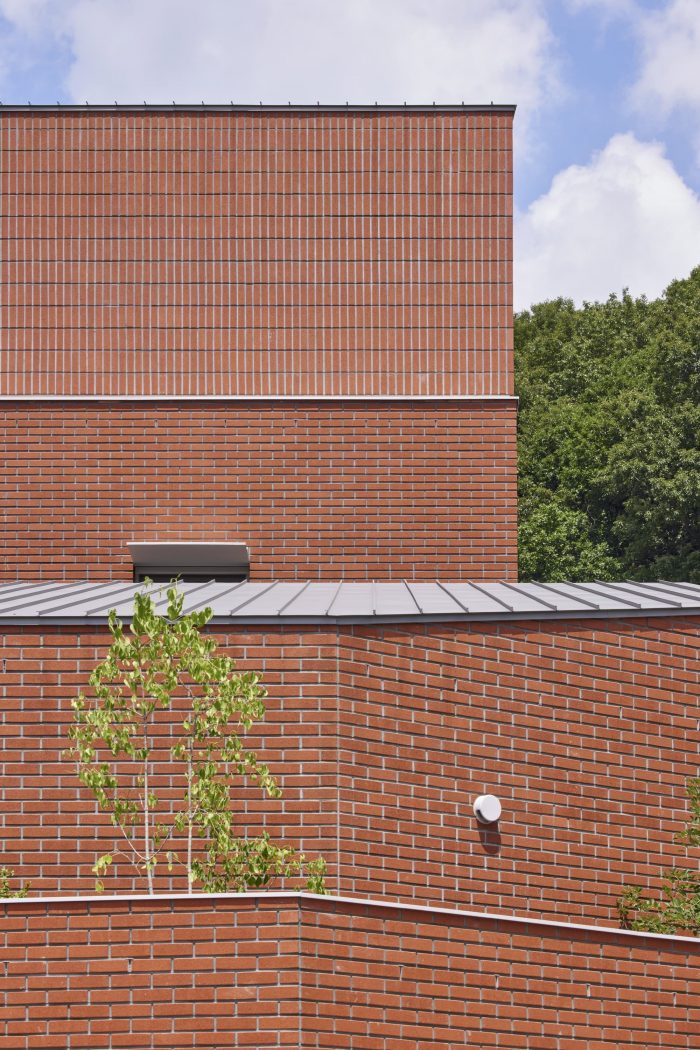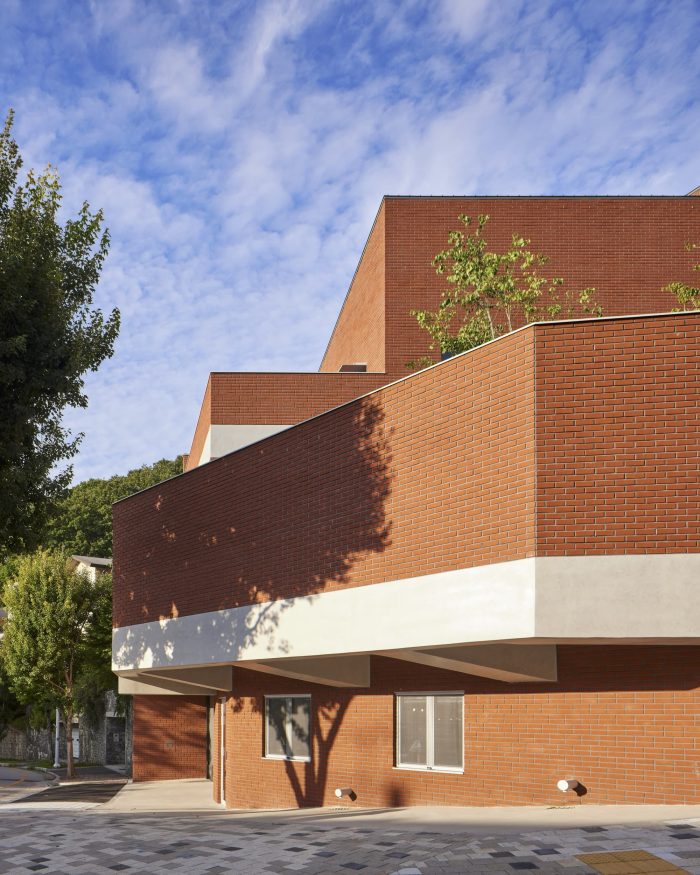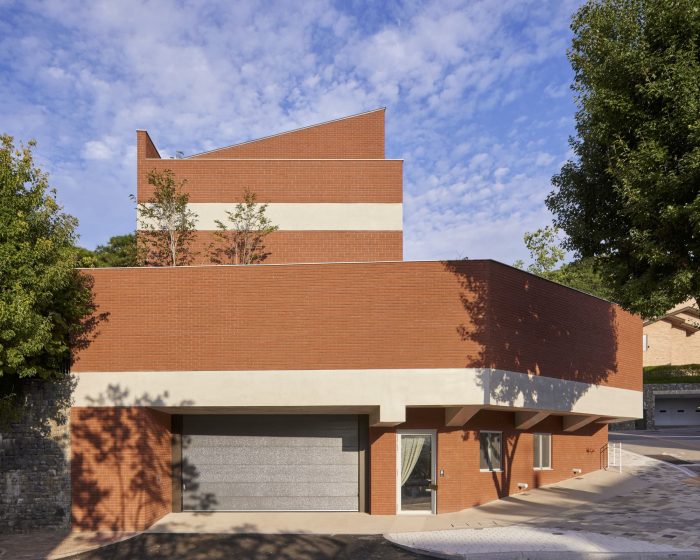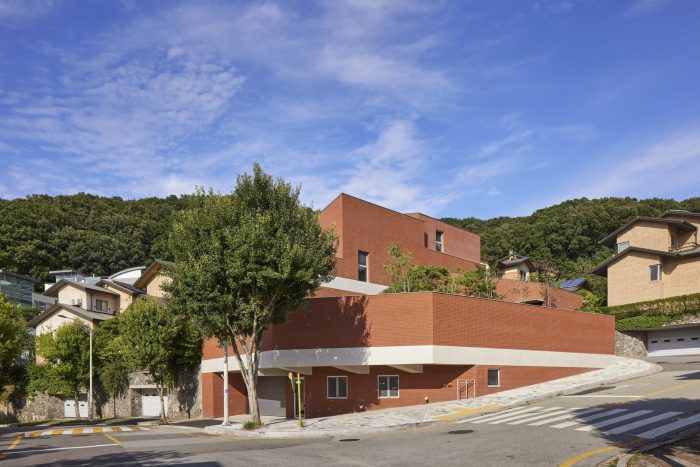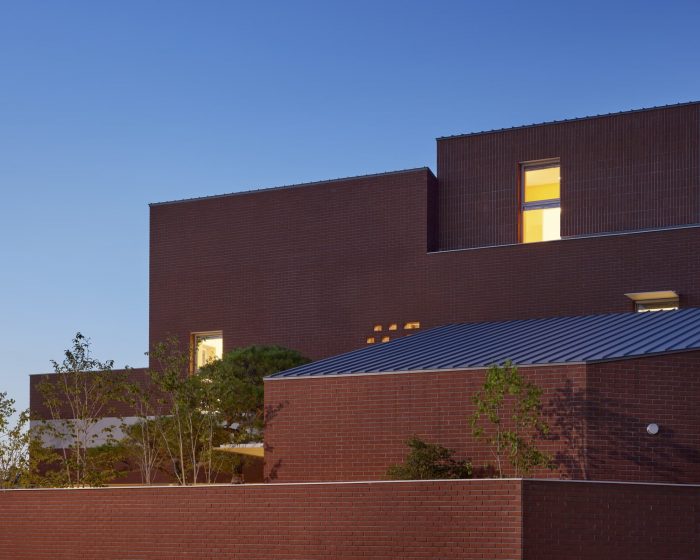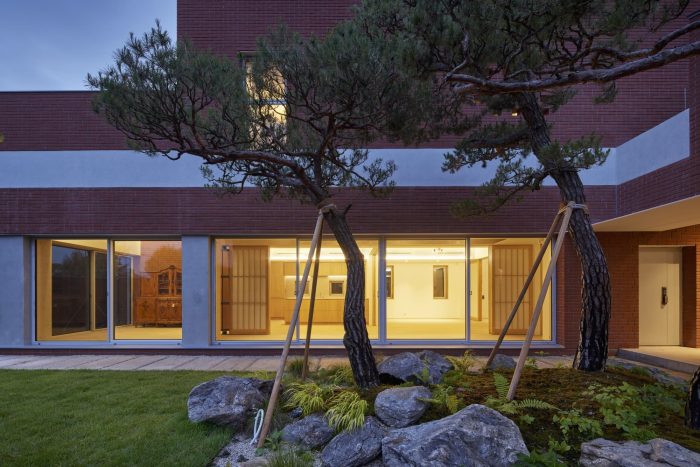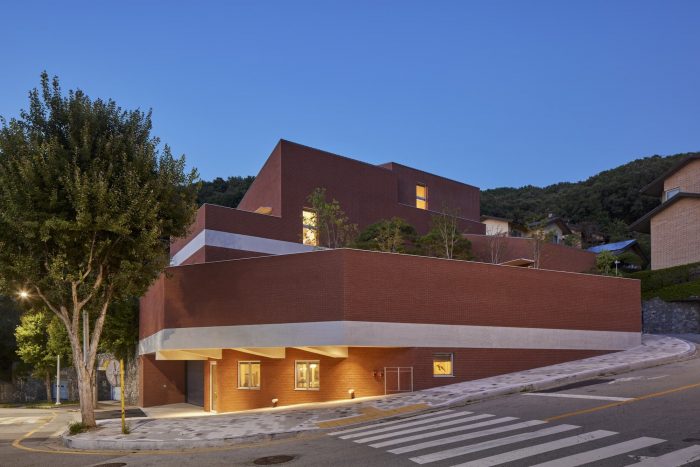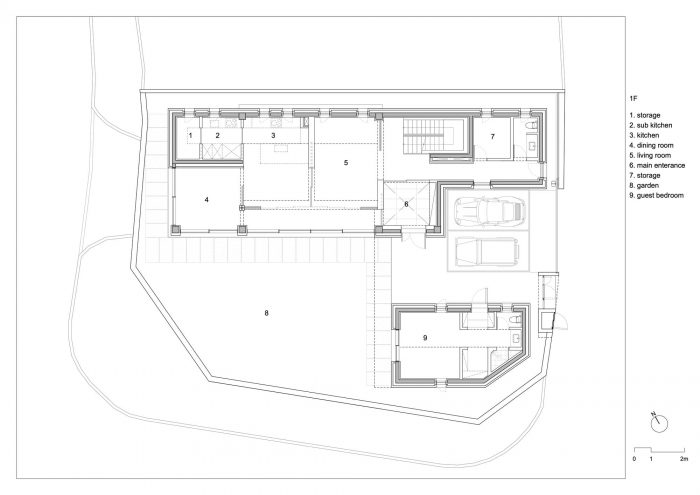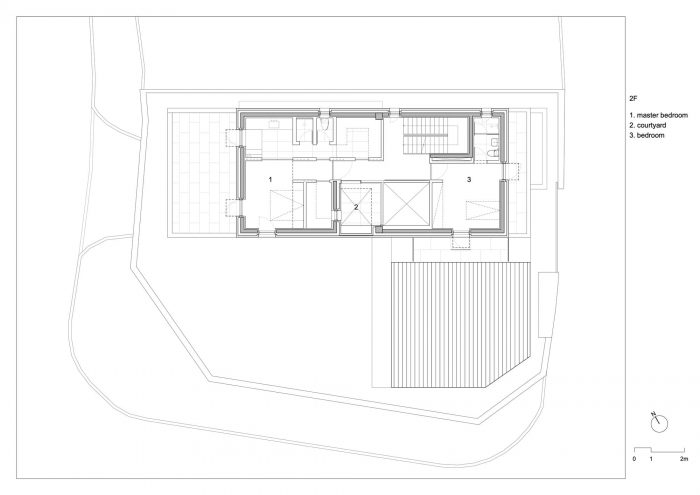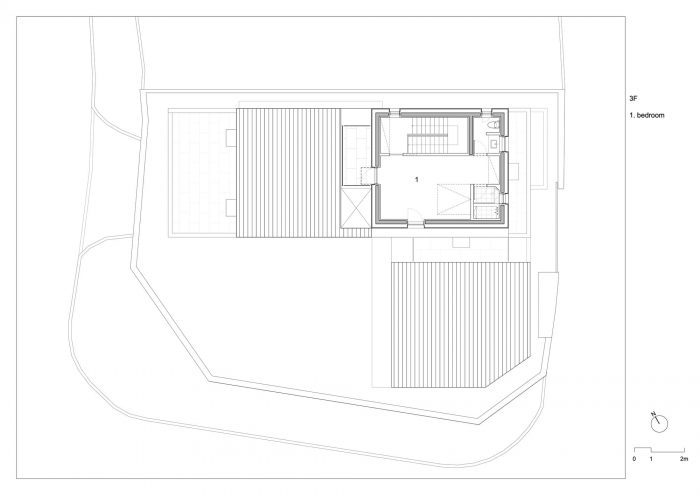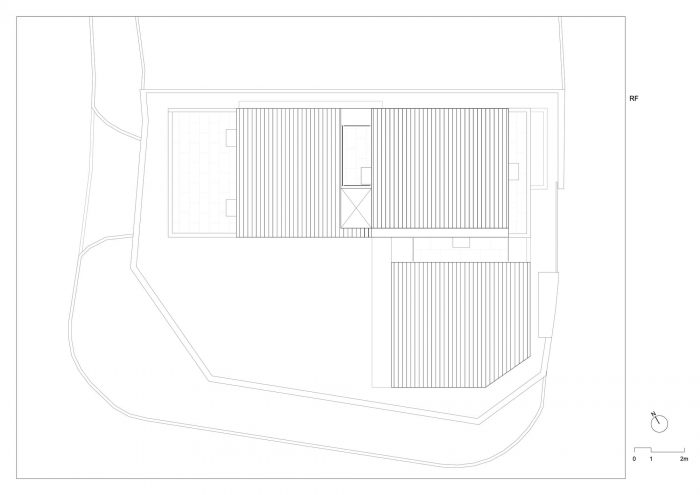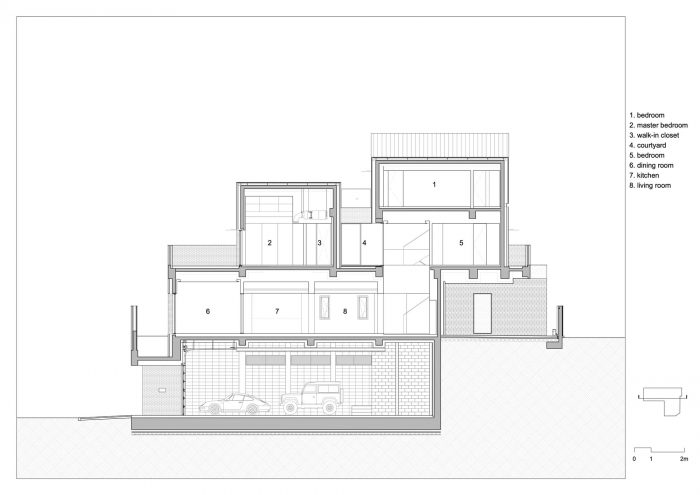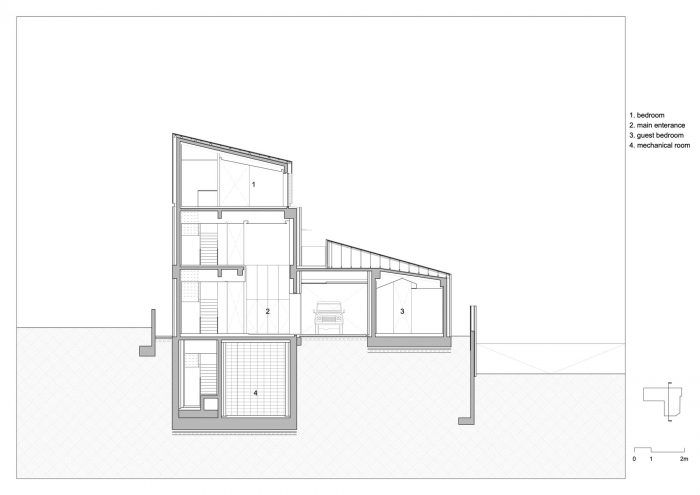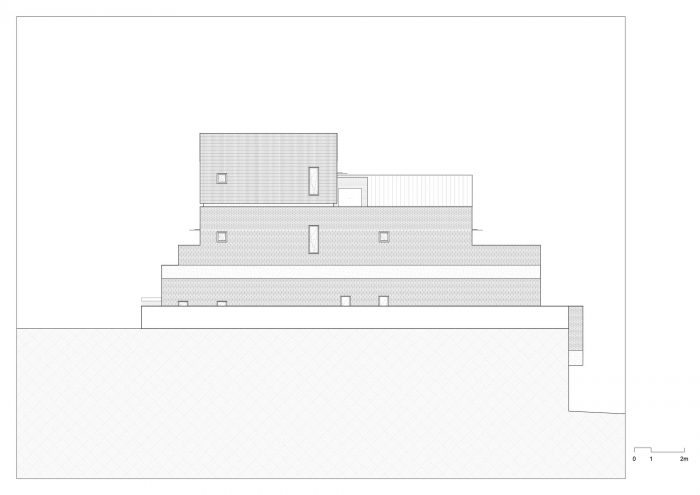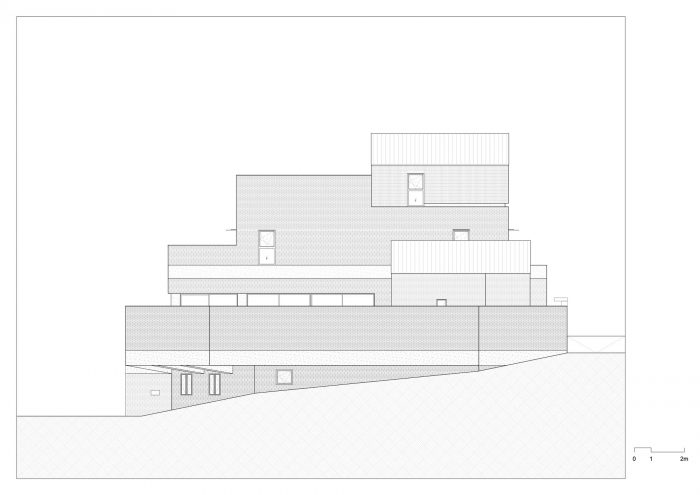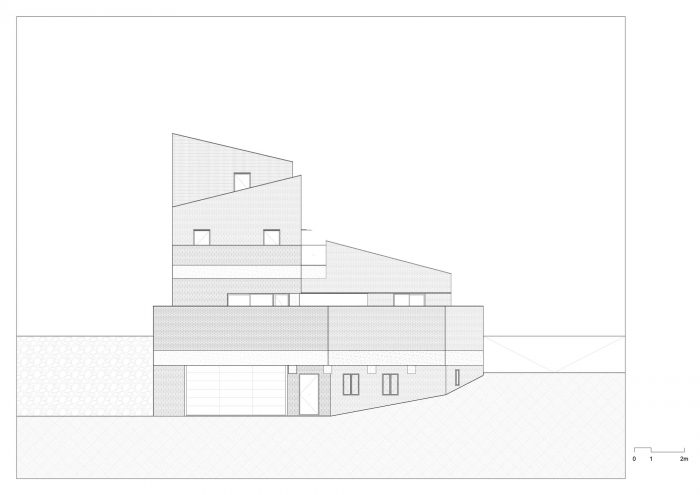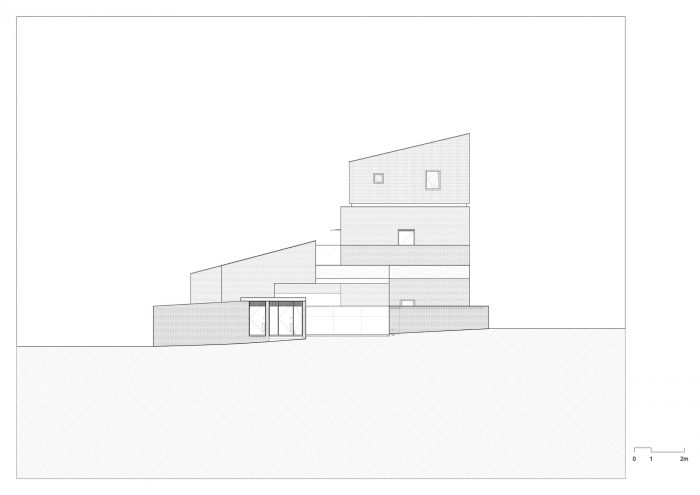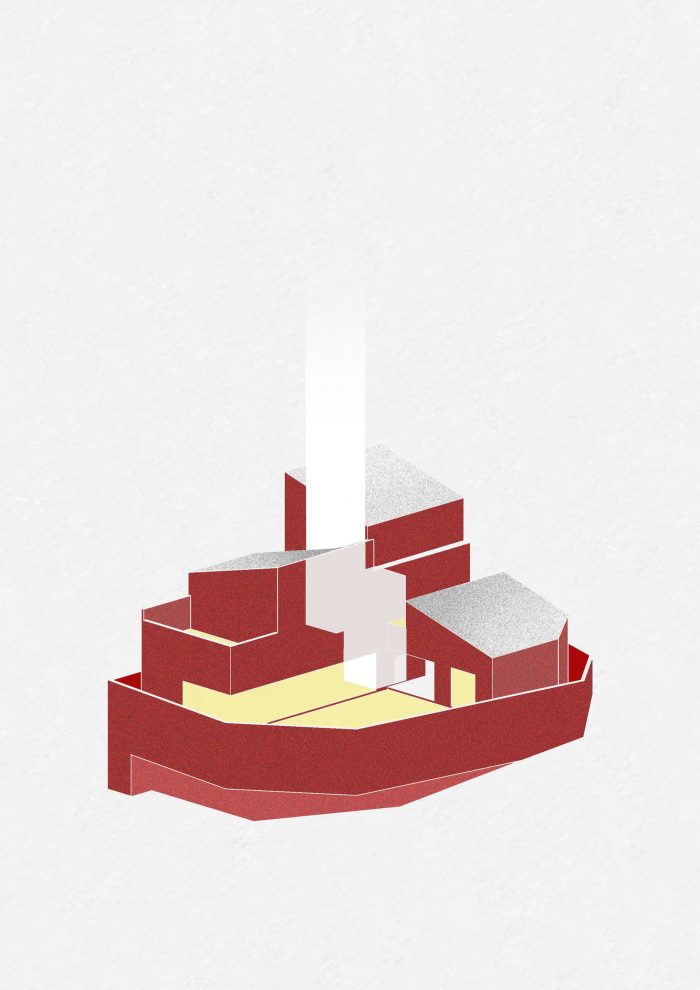这家人决定拆除他们住了很久的老房子,在同一个地方建一个新房子。因为那是他们住了很久的地方,他们知道这个地方的优点和缺点。他们也有住在各种房子里的经验,这让他们对什么样的房子适合这个家庭有了很高的理解和期望。该地块位于一个区的角落里,那里重复建造着类似形状的房屋。四个面中有三个面与坡道接触,场地的西面和东面的高度差为4.9米。
The family decided to demolish the old house they had lived in for a long time and build a new one in the same place. Because it was where they had lived for a long time, they knew the pros and cons of the site. They also had an experience living in various houses, which gave them a high understanding and expectation of what kind of house was right for the family. The site is located in the corner of a district where a similar shape of houses was built repeatedly. Three of the four sides are in contact with a ramp, and the height difference between the west and east sides of the site is 4.9 meters.
房屋的尺寸是计划期间的一项任务。在与家庭协商阶段,整体规模被规划得比周围的建筑大。在早期的研究中,它最初是一个两层楼的房子,但家庭希望增加第三层。地区法规中强制性的倾斜屋顶使这个房子变得更大。另外,用于保护隐私的坚固围栏也成为另一个元素,使房子的体积比周围的更大。
The size of the house was a task during the plan. The overall scale was planned to be larger than the surrounding buildings in the consultation stage with the family. It was initially a two-story house during the early study, but the family wanted to add a third floor. The obligatory sloping roof of the district code made this house even larger. Also, the solid fence for privacy has become another element that makes the house’s volume even more significant than the surrounding.
开发商用砖头建造了该区的大部分房屋,而且不是单一的体量,而是由分段的体量和屋顶组成。利用周围的特色元素可以与周围的环境相协调,并解决因要求而增加的尺寸问题。建筑被分为几个体量,并将第三层从第二层抬起。屋顶向两个不同的方向倾斜。根据单一的通用材料,用混凝土板条将体量分为几层,砖被用在三种不同的模式中。
The developer built most of the houses in the district with bricks, and rather than a single volume, they consisted of segmented volumes and roofs. Utilizing the characteristic elements of the surrounding could harmonize with the surrounding context and solve the problem of the size increased by the requirements. The architecture was divided into several volumes and lifted the third from the second floor. Roofs were sloped in two different directions. According to a single universal material, the bulkiness was divided into layers with a concrete slab strip, and the bricks were used in three different patterns.
毕竟,在韩国常见的熟悉的红砖房的元素是主题。来自韩国和国外的标准元素被重新解释或以不同的方式混合,以便不至于太新或太陈旧。一个典型的例子是一个带有韩国传统门的柱子。这根柱子需要一个合适的尺寸来接收四对门。就像建筑抵消了体积感一样,柱子也被分成了四块垂直的部分和铁带。中央的铁柱使用了密斯-凡德罗的元素,木头和金属柱的组合来自卡洛-斯卡帕,而铁带是韩国传统建筑资产中的一个元素。
After all, the element of familiar red brick houses commonly seen in Korea was the motif. Standard elements from Korea and abroad were reinterpreted or mixed in different ways so as not to be too new or cliché. A typical example is a pillar with a traditional Korean door. This pillar needed an appropriate size to receive four pairs of doors. Just as the architecture offsets the sense of volume, the posts were also divided into four vertical pieces and iron bands. The central iron column used the element from Mies Van der Rohe, the combination of wood and metal column was from Carlo Scarpa, and the iron band was an element seen in Korean traditional architectural assets.
与设计元素同样重要的是视觉开放和隐私共存。由于客户的家人喜欢户外生活,他们希望在保持隐私的前提下,从房子的任何地方都能接触到户外。一楼是一个家庭空间,用门而不是墙隔开,所以房间可以灵活地通向花园。二楼是一个私人空间,其构成与一楼完全不同。窗户被最小化以减少暴露,露台栏杆的高度掩盖了大部分的窗户。每个房间都有独立的露台,供室外使用。走廊也被设计成一个院子,以便在没有窗户暴露在外面的情况下进行通风和采光。这些方法既允许窗帘和窗户打开,又能保护隐私。
As important as the design elements were visual openness and privacy coexistence. Since the client’s family enjoyed outdoor life, they wanted to have access to the outdoors from anywhere in the house within keeping privacy. The first floor was a family space that was partitioned with doors instead of walls so rooms could open flexibly to the garden. The second floor was a private space, and the composition was quite different from the first floor. The windows were minimized to reduce exposure, and the height of the terrace railing was hiding most of them. Every room had individual terraces for outdoor access. The hallway was also designed with a courtyard to allow ventilation and light without windows exposed to the outside. These methods permitted both curtains and windows open while protecting privacy.
室内空间有一种开放的感觉,各楼层之间有联系。入口处的空隙空间垂直连接着一楼和二楼,紧挨着空隙的院子连接着二楼和三楼。主卧室和浴室之间的墙即使在门关闭的情况下也很短,无法创造开放性。门的设计是为了在打开时打破房间之间的界限。这种方法在纵向和横向上连接了房子。
The interior space has a sense of openness and connection between the floors. The void space of the entrance vertically connects the first and second floors, and the courtyard right next to the void connects the second and third floors. The wall between the main bedroom and bathroom is short of creating openness even when doors are closed. The doors were designed to break the boundaries between the rooms when they are opened. This method connects the house vertically and horizontally.
熟悉的元素可以很容易地融入周围的环境并提供舒适感,而对立的元素则可以满足各种要求。Jeokhoje通过收集标准特征创造了新的东西,并通过对立的元素完成。尺寸和特征是为了创造与邻居的和谐,它必须同时满足隐私和视觉开放。虽然房子借用了周围熟悉的材料和方法,但它对它的重新解释是新的。此外,从个人和公众的角度来看,它是一个通过相反和熟悉的元素来满足和协调的作品。
Familiar elements can easily fit into the surrounding context and provide comfort while opposing elements can satisfy various requirements. Jeokhoje created something new by gathering standard features and was completed through opposing elements. The size and characteristics were meant to create harmony with the neighbors, and it had to satisfy privacy with visual openness simultaneously. Although the house borrowed familiar materials and methods from the surrounding, its reinterpretation of it is new. Furthermore, it is a work satisfied and harmonized from the standpoint of individuals and the public through elements of opposite and familiarity.
Architects: NOMAL
Area : 572 m²
Year : 2022
Photographs :Roh Kyung
Construction : Jayeon & woori
Structural Engineers : The One Engineering
Mechanical Engineers : Chung Lim Mechanical Engineering & Consultant
Landscape Collaborator : Yeonsudang
Civil Engineers : Dong In G Tech Co.
Telecommunication Equipment : Woo Lim Electrical Emgomeering & Consultant
City : Seongnam-si
Country : South Korea

